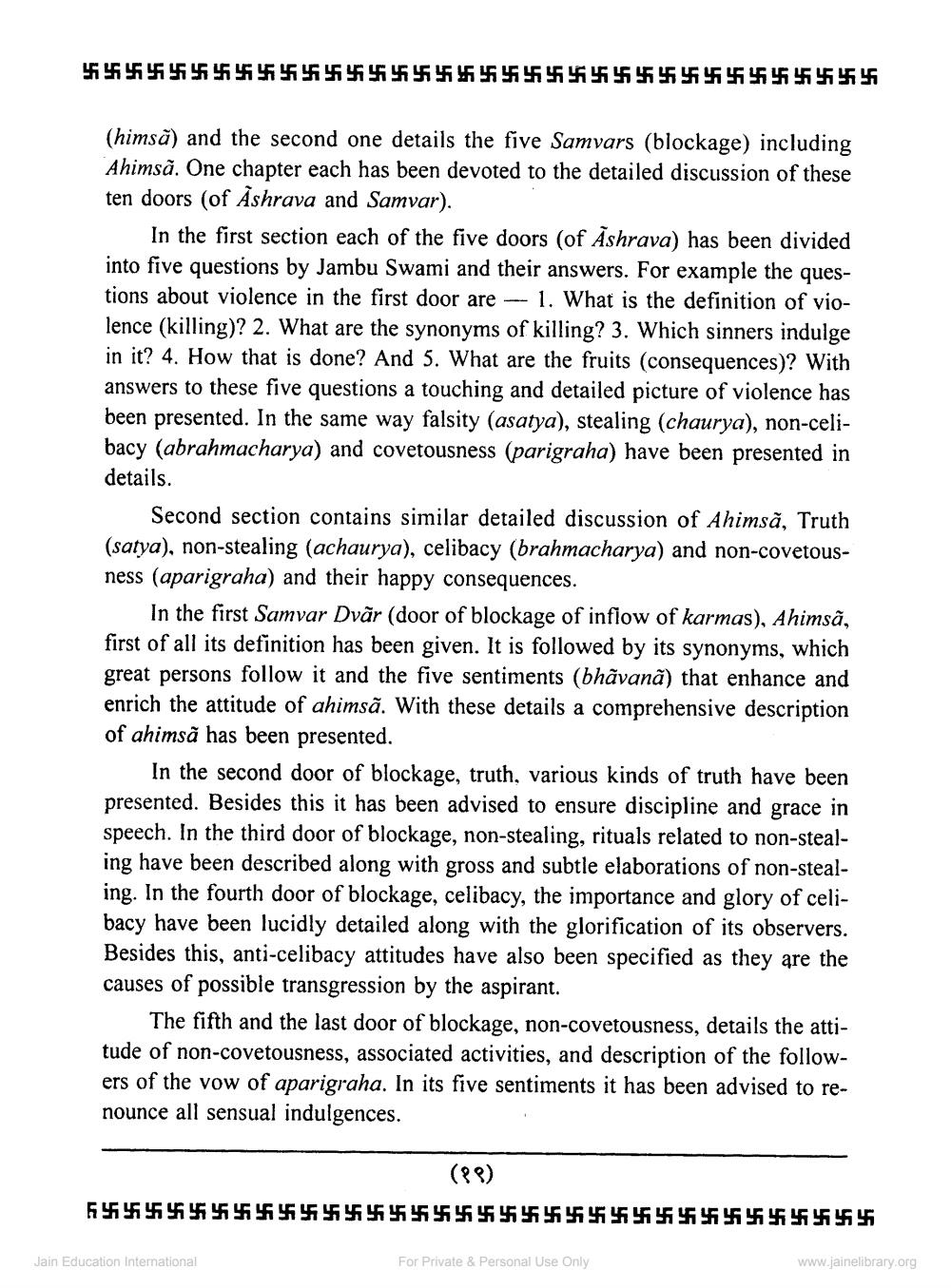________________
5 5 5 5 5 5 5 5 5 5 55 5555 5 5 5 5 5 5 5 5 5 5 5 5 5 5 5 5 5
(himsa) and the second one details the five Samvars (blockage) including Ahimsa. One chapter each has been devoted to the detailed discussion of these ten doors (of Ashrava and Samvar).
In the first section each of the five doors (of Ashrava) has been divided into five questions by Jambu Swami and their answers. For example the questions about violence in the first door are -- 1. What is the definition of violence (killing)? 2. What are the synonyms of killing? 3. Which sinners indulge in it? 4. How that is done? And 5. What are the fruits (consequences)? With answers to these five questions a touching and detailed picture of violence has been presented. In the same way falsity (asatya), stealing (chaurya), non-celibacy (abrahmacharya) and covetousness (parigraha) have been presented in details.
Second section contains similar detailed discussion of Ahimsã, Truth (satya), non-stealing (achaurya), celibacy (brahmacharya) and non-covetousness (aparigraha) and their happy consequences.
In the first Samvar Dvar (door of blockage of inflow of karmas), Ahimsã, first of all its definition has been given. It is followed by its synonyms, which great persons follow it and the five sentiments (bhavana) that enhance and enrich the attitude of ahimsa. With these details a comprehensive description of ahimsa has been presented.
In the second door of blockage, truth, various kinds of truth have been presented. Besides this it has been advised to ensure discipline and grace in speech. In the third door of blockage, non-stealing, rituals related to non-stealing have been described along with gross and subtle elaborations of non-stealing. In the fourth door of blockage, celibacy, the importance and glory of celibacy have been lucidly detailed along with the glorification of its observers. Besides this, anti-celibacy attitudes have also been specified as they are the causes of possible transgression by the aspirant.
The fifth and the last door of blockage, non-covetousness, details the attitude of non-covetousness, associated activities, and description of the followers of the vow of aparigraha. In its five sentiments it has been advised to renounce all sensual indulgences.
(१९)
65555555555555555555555555555
Jain Education International
For Private & Personal Use Only
www.jainelibrary.org




